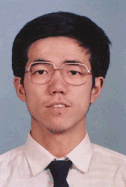Control Seminar
Deployment Optimization for Field Sensor Network

"Autonomous' will play a critical role in ongoing Industry 4.0 with systematic "embedded intelligence' into various industrial processes and systems, such as intelligent manufacturing and autonomous vehicles. Among enabling technologies for such autonomous trend is the broad application of so-called "field or range sensors' which "measure' targets in a geometrically distributed space, 2-D and 3-D. These kind of sensors are different from traditional "point sensors' measuring a discrete value of electric or mechanical entities. Besides, practical application normally requires collaborative network of maybe different kinds of field sensors to allow optimized data fusion. Therefore, deployment optimization of such a sensor network to facilitate the most efficient intelligent performance of tasks becomes both important in applications and interesting in research.
In this talk, a camera sensor case (hence a field sensor) is first discussed with a parameterized coverage model and a metric called "vision distance'. Then it is shown how a static camera sensor network could be deployed in optimal sense. Motivated by this case, a theoretical coverage modeling framework is proposed to allow formulation of general field sensor network deployment into an optimization problem based on a "central convex set". It is shown that if the effective sensing range is a central convex set, then a coverage distance function can be appropriately defined, which renders 1 for any point on the sensing boundary, less than 1 for any point inside the sensing coverage, and greater than 1 for any point outside the sensing range. Specifically, a homeomorphism is applied to map the original anisotropic sensing range into an isotropic region with an appropriate distance function in the mapped space. The equivalence of these two distance functions is proved in terms of field sensor coverage and the new distance function can provide nice interpretation of coverage strength, facilitating convenient field sensor coverage optimization. Examples are provided to validate the generic theoretic results for several typical field sensors with different sensing ranges and dimensions. To further validate the effectiveness of the proposed approach, optimal multi-camera deployment problem is revisited for visual coverage as a comparison.
Xiang Chen received his Ph. D. degree in systems and control from Louisiana State University in 1998. Since 2000, he has held cross-appointed faculty position with Department of Electrical and Computer Engineering and Department of Mechanical, Automotive and Materials Engineering at the University of Windsor and is currently a Professor in the Department of Electrical and Computer Engineering. He is currently an Associate Editor for SIAM Journal on Control and Optimization and a Technical Editor for IEEE/ASME Transaction on Mechatronics.
 MENU
MENU 
